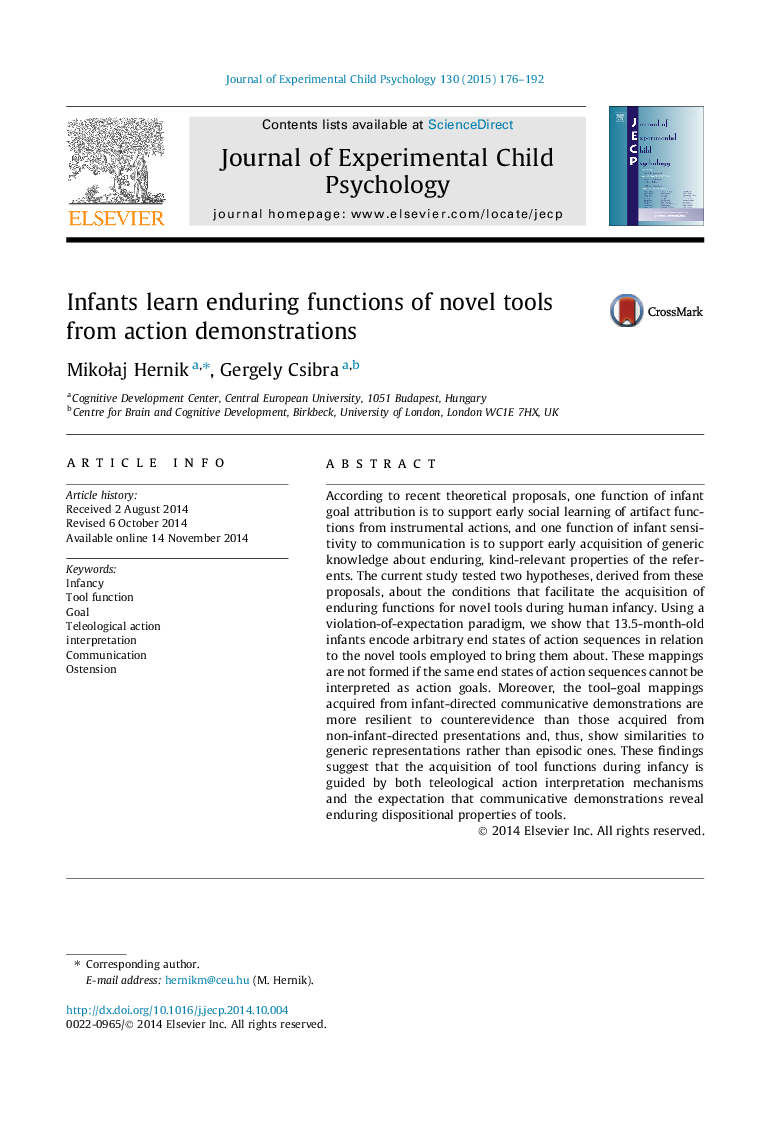| Article ID | Journal | Published Year | Pages | File Type |
|---|---|---|---|---|
| 918010 | Journal of Experimental Child Psychology | 2015 | 17 Pages |
•13.5-month-olds map observed goals of efficient opaque actions on novel tools.•No evidence of mappings if action end-states are not action goals.•Mappings learned from communicative demonstrations are resilient to counterexample.•Mappings learned from non-infant-directed displays are less resilient.•Infants can learn enduring tool functions from communicative demonstrations.
According to recent theoretical proposals, one function of infant goal attribution is to support early social learning of artifact functions from instrumental actions, and one function of infant sensitivity to communication is to support early acquisition of generic knowledge about enduring, kind-relevant properties of the referents. The current study tested two hypotheses, derived from these proposals, about the conditions that facilitate the acquisition of enduring functions for novel tools during human infancy. Using a violation-of-expectation paradigm, we show that 13.5-month-old infants encode arbitrary end states of action sequences in relation to the novel tools employed to bring them about. These mappings are not formed if the same end states of action sequences cannot be interpreted as action goals. Moreover, the tool–goal mappings acquired from infant-directed communicative demonstrations are more resilient to counterevidence than those acquired from non-infant-directed presentations and, thus, show similarities to generic representations rather than episodic ones. These findings suggest that the acquisition of tool functions during infancy is guided by both teleological action interpretation mechanisms and the expectation that communicative demonstrations reveal enduring dispositional properties of tools.
